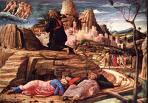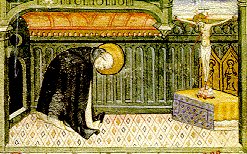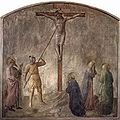“A clean heart create for me, God: renew in me a steadfast spirit.”
Taken from Psalm 51, it is the prayer of repentance and sets the tone for our entry into the celebration of the Triduum(the three day celebration of Holy Thursday, Good Friday, and Easter Vigil). It is a reminder that God’s grace is like a river of cleansing water. It is not too late to receive the grace of forgiveness in the sacrament of reconciliation. Your local parish probably has special times posted. The Shrine of the Immaculate Conception is offering the sacrament from 10:00 a.m-6:00 p.m. on Wednesday and Thursday with four priests available. See www.nationalshrine.com. The Franciscan Friars have confessions on the hour between 9:00 and 4:00 p.m. See www.myfranciscan.org.
Another practice of the heart is to calculate how much money you saved if you “gave up” something for Lent. In my case that daily cappuccino adds up to about $135.00. That makes a very nice contribution to my favorite charity or the poor box at church. I read something very interesting today. The fast of the Triduum is not so much the fast of a penitent but rather the fast of anticipation—of looking forward and readying ourselves for the celebration of Easter. It made me ask myself what should change in how I fast the next couple of days. What does an anticipation fast look like? If God is promising a steadfast spirit, what might a steadfast spirit look like for me?

A special tradition follows the celebration of the Lord’s Supper on Thursday. It is a period of adoration inviting people to do what the disciples who were with Jesus in the garden could not do—to stay and pray with him. Can we be different and pray with our Lord? Most churches will be open until 9:00 p.m. or 10:00 p.m. Why not plan to stay? There was a practice a generation or so ago to visit seven churches on Holy Thursday evening. Why not choose two or three near you to visit?
This blog began as part of our campaign to extend invitations to people we know who have been away from the Church to come back to Mass. If you’ve been meaning to ask someone, why not consider inviting that person to one our Holy Week services.
“Restore my joy in your salvation; sustain in me a willing spirit.”


 At a talk with a group of young adults, someone asked about the history of the Stations of the Cross and I did not have an answer! I certainly pray the Stations of the Cross and when I go into a church for the first time, I like to take a look at that Church’s stations because there are such a wide variety of styles. When I was a student in Rome, one of my most memorable experiences was praying the Stations of the Cross at the Roman Coliseum on Good Friday with Pope John Paul II. Pope John Paul had the practice of inviting different groups of people to write the reflections to accompany the stations. The year I participated, he had invited Catholic journalists to be the writers. One of my housemates who wrote for a German Catholic newspaper was chosen as a writer. For all of the discussions we had about the Stations of the Cross as we helped her prepare, you would think I would have learned something about their origin.
At a talk with a group of young adults, someone asked about the history of the Stations of the Cross and I did not have an answer! I certainly pray the Stations of the Cross and when I go into a church for the first time, I like to take a look at that Church’s stations because there are such a wide variety of styles. When I was a student in Rome, one of my most memorable experiences was praying the Stations of the Cross at the Roman Coliseum on Good Friday with Pope John Paul II. Pope John Paul had the practice of inviting different groups of people to write the reflections to accompany the stations. The year I participated, he had invited Catholic journalists to be the writers. One of my housemates who wrote for a German Catholic newspaper was chosen as a writer. For all of the discussions we had about the Stations of the Cross as we helped her prepare, you would think I would have learned something about their origin.